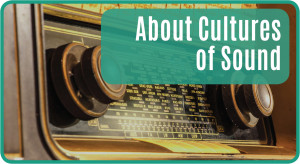CULTURES OF SOUND AND THE WAR WITHOUT END
A Symposium held on June 2, 2015, at the Sussex Humanities Lab, University of Sussex, and sponsored by Public Culture Hub and Sussex Centre for Culture Studies (SCCS)
Marking the 13th anniversary of the September 11th attacks, Barack Obama announced the latest phase of the war without end – a bombing campaign of unspecified duration that would take in both Syria and Iraq. Weeks later they were joined by the British Armed Forces.
Under the sign of ‘terror’, this unending war has shaped the places that have been bombed and places that have done the bombing. The estimated 500,000 dead in Iraq and what Claire Alexander has referred to as “the rise and rise” anti-Muslim racism in Britain are but two examples of this. However, other dimensions of cultural life have also changed, including the cultures and circuits of sound.
Cultures of sound have long been intertwined with cultures of war. The vocoder, originally developed to disguise military communications, found its way into popular culture through the work of Moog, Kraftwerk, Grandmaster Flash, Stevie Wonder, 2Pac and Daft Punk among others. In aerially assaulted settlements across the Middle-East and Asia, the sound of bombing, inseparable from everyday life, is sold as entertainment – with games such as Call of Duty: Black Ops earning over $1 Billion in worldwide sales.
In the development of weapons, sound (and music) forms part of the US repertoire of “advanced interrogation” (or torture) techniques, while in the UK’s urban wars Compound Security produces the high-frequency Mosquito device to exclude young people from public space; a device re-invented by young people as the Teen Buzz – a downloadable, Bluetooth-able, sound file that produces a continuous high-pitched sound to target adult authority.
War is known about through sounds. Through soundscape of the Blitz or Operation Protective Edge the ear is trained. Sounds, or their absence, trigger fear, trauma and relief. War, sound and memory interlink. Bugles, anthems and the voices of the dead are audible through the colonial framing of remembrance. At the same time the voices and sounds of colonial soldiers are silenced. Disrupting and re-tuning these cultures of sound then becomes an important post-colonial intervention, as Nirmal Puwar has demonstrated in Noise of the Past.
As Les Back, Paul Gilroy and others have noted, alternative cultures of sound have provided struggles against and demands beyond war at home and abroad. While this is the case, commercial hip hop now provides sound tracks for war and anti-colonial intimacies of former urban music cultures have been fragmented through digital communication.
Through a series of talks and installations, performances and a film screening this symposium explored these and other cultures of sound as connected to unending war.
Participants included, Les Back (Goldsmiths), Michael Bull (Sussex), Joanna Callaghan (Sussex), Louis Goddard (Sussex), Michael Guida (Sussex), Malcolm James (Sussex), Thanos Polymeneas-Liontiris (Sussex), Kuldip Powar, Nirmal Puwar (Goldsmiths), Lyn Thomas (Sussex), Tom Tlalim (Goldsmiths).
